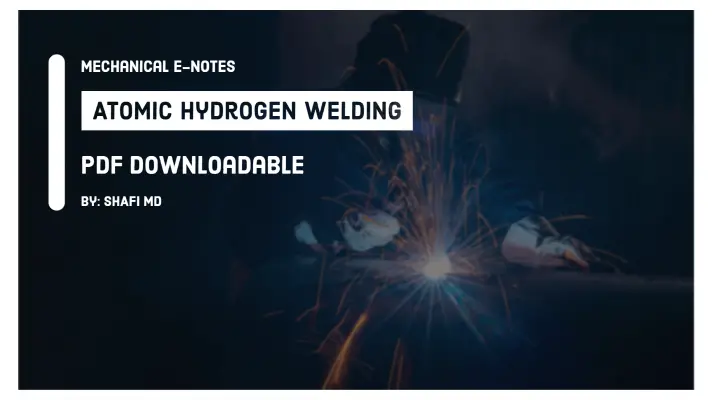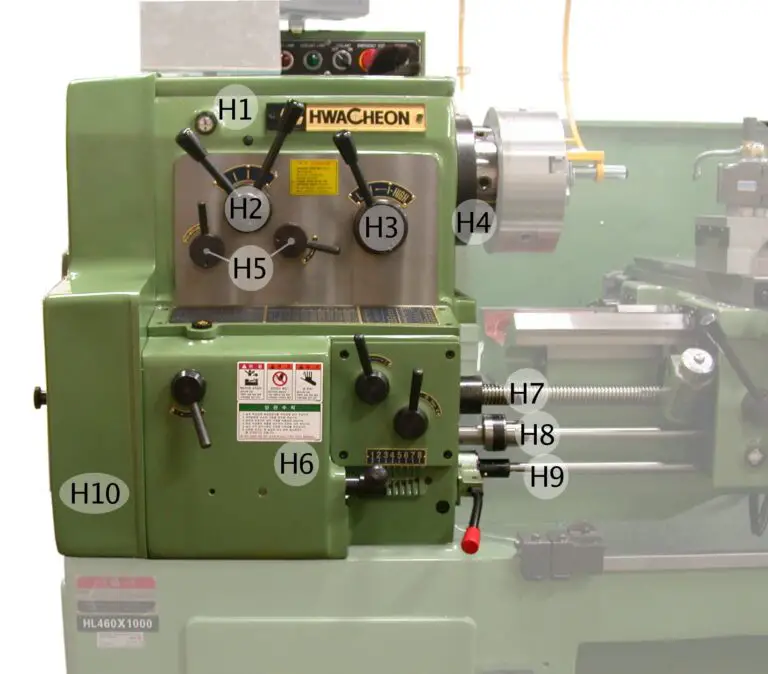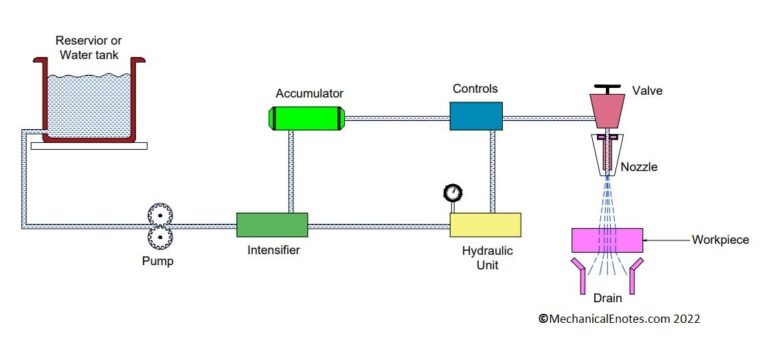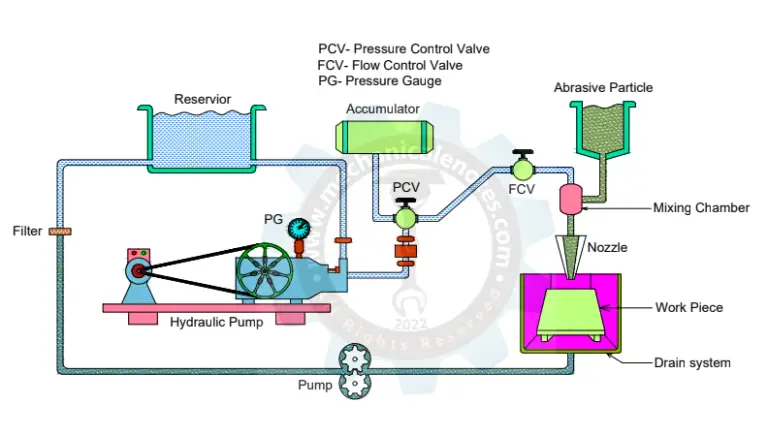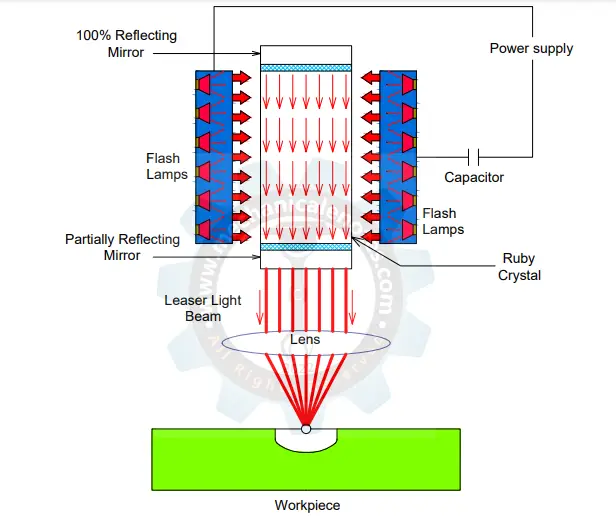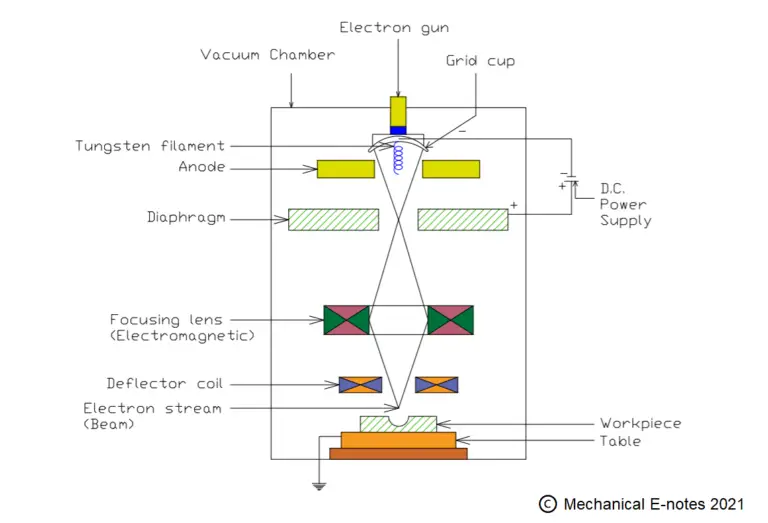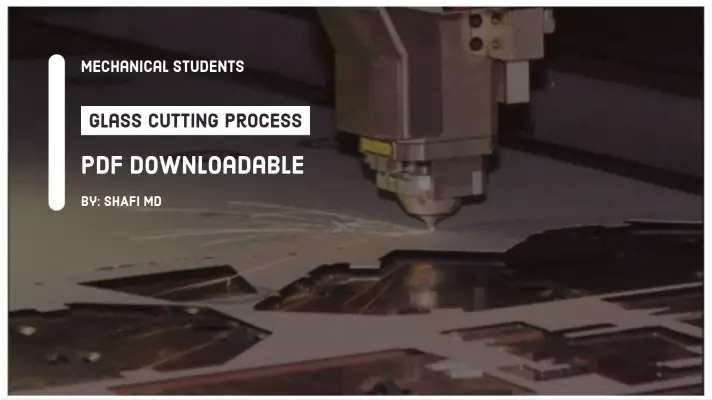Engineering Workshop Notes, Viva Questions [PDF]
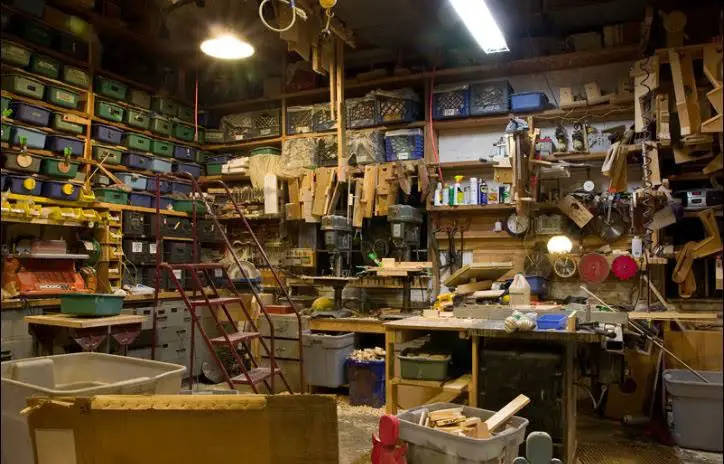
As you have seen that Engineering Drawing is a common lab for all Engineering students, similarly Engineering Workshop is also the common theory/lab for all the branches of Engineering.
It is also called Engineering Workshop Practices (EWP) or Workshop Manufacturing Practices (WMP) depending on the subject format(syllabus).
Syllabus of Engineering Workshop
In this article, whatever the syllabus of EWP/WMP was made by the Academics Dept., the same was presented here in a detailed way.
All the concepts w.r.t. various units are presented below in the form of links. Just click them to navigate through.
The concepts which come under the fitting workshop are presented in a single article whose link was placed below.
Click Here: Engineering Fitting Workshop
The concepts which come under this unit are presented in the below link.
Click Here: Electrical and Electronic Appliances
For Electronic Appliances, you can read anyone appliance perfectly which was already presented in the above link.
The concepts which come under the Carpentry Workshop were furnished below in the form of a PDF.
Click Here: Engineering Carpentry Workshop
Click on the below links for the concepts of Unit 4.
Processing of Plastics:
Die Casting Process (Read the principle only, Types of die casting process was not in the syllabus)
Welding Process & Electric Arc Welding Process
Sheet Metal Operations or Press Working Operations:
Machining Process: Types, Advantages, Limitations, Machine Tool, Cutting Tool, Chips
Principle and Construction of Lathe Machine
Principle and Construction of Drilling Machine
Principle and Construction of Grinding Machine
CNC-Advantages and Parts of CNC System
Advanced Manufacturing:
Additive Manufacturing: Fused Deposition Modelling, Selective Laser Sintering(SLS) [Actually, this article is redirected to Recent Trends in Mechanical Engineering. So, read-only about Additive Manufacturing or 3D Printing only.]
This is the complete list of Workshop Manufacturing Practices. Just click on the above links to navigate through them.
Now Let's know the Questions and Answers from Engineering Workshop.
Engineering Workshop Questions and Answers
The Very Short Answer Questions are listed under the last 3 units. The First 3 units will be updated soon…
Unit -IV: Plastic Molding & Glass Cutting
The Very Short answer Questions and Answers are as follows.
1. Define Plastic?
Plastics are also called Polymers. They are made up of carbon, hydrogen, and sometimes oxygen, chlorine, nitrogen, fluorine, sulfur, phosphorus, or silicon. The majority of the time, polymers are made up of Carbon, Hydrogen, and Oxygen only.
2. What are the Properties of Plastic?
- It is a low-density polymer and thereby it possesses lightweight.
- It is Anti-Corrosive in nature.
- It has low strength.
3. What are the Properties of Glass?
- It is amorphous in nature.
- It is very brittle.
- It Softens on heating
- It can absorb, transmit and reflect light.
- It is a good electrical insulator.
- These are affected by alkalis.
4. Name the methods used in glass cutting?
The glass cutting tools which are used to cut the glass are as follows.
- Wheel Cutting or Glass Cutter
- CO2 Laser Cutting
5. What are the products manufactured by using thermoplastics?
- Polyethylene
- Poly Vinyl Chloride(PVC)
- Teflon
6. Name the various types used for processing plastics?
- Injection Moulding & Blow Moulding
7. What are the applications of injection molding? Give some examples?
- Kitchen Products
- Agriculture Products
- Plastic Buckets
- Industrial Pump Impeller
- Water Cooler Parts
- Medical Products
8. What are the applications of blow molding? Give some examples?
- Water Bottles
- Plastic Buckets
- Liquid Containers
- Plastic Cups
- Mugs etc.
9. What are the advantages of laser cutting over wheel cutting?
- It can easily cut simple and complex structures.
- Human intervention is for Inspection and repairs and thereby it is a time-consuming process.
- Performs various Operations at a time.
10. What is laser cutting?
Laser cutting machines are equipped with computer-controlled programming that helps to do the work more efficiently and easily. The laser beam is used to cut different materials like metal, wood, rubber, glass, and plastics. By this, a high degree of accuracy is maintained.
Unit-5: Metal Casting, Metal Joining, and Metal Forming
The VSAQ and Answers were presented below.
1. Define Casting?
It is a process in which the liquid molten metal is poured into the casting cavity whose shape is the same as that of the shape of the casting to be produced, allowing it to solidify, and after solidification, the casting will be taken out by breaking the mold called as the Casting process.
2. Define Welding?
Welding is a process of joining two or more similar or dissimilar metals with or without the application of heat, with or without the application of pressure, and with or without the application of filler material.
3. List the main advantages of the casting process?
- High complexity shapes
- Short lead time
- Low-cost tooling
- Design flexibility
4. Distinguish between Blanking and Punching operations?
Punching Operation: When the force is applied by using the punch onto the sheet, the cutting or shearing action will be taking place in the sheet producing a piece/blank leaving a hole in the sheet called a Punching Operation.
Blanking Operation: When the force is applied by using the punch onto the sheet, the cutting or shearing action will be taking place in the sheet producing a piece/blank called a Blanking Operation.
5. What is Pattern? Name the different pattern materials?
It is the replica of the casting to be produced. Replica means, the shape of the pattern remains the same as that of the shape of the casting to be produced.
The different types of patterns are as follows.
- Solid pattern
- Split pattern
- Match plate pattern
- Cope Pattern and Drag Pattern
6. Differentiate soldering and Brazing?
Brazing: It is a process of joining similar or dissimilar metals by means of filler material. The filler material is called a Spelter and the filler material is made up of Copper alloy.
Spelter+Borax+Water = Paste
A mixture of Spelter and Borax with Water is used as a paste and is applied to the metal parts at the joints.
Soldering: It is a process of joining similar or dissimilar metals by means of filler material. The filler material is called Solder and the filler material is made up of Lead-Tin alloy.
7. What is the use of core in the Casting Process?
It is used to produce hollow components in the casting process.
8. What is pattern allowance? Explain about different types of pattern allowances?
Pattern allowances are given to the pattern to compensate for metal shrinkages, provide sufficient metal for machining, and to facilitate the proper molding process.
Types of allowances are as follows:
- Shrinkage Allowance
- Machining Allowance
- Draft Allowance
- Shake Allowance
- Distortion Allowance
9. Write the classification of Welding?
- Fusion welding
- Arc welding
- Gas welding
- Chemical welding
- Non Fusion welding
- Resistance welding
- Soldering
- Brazing
- Cold pressure
- Cryogenic
Unit 6: Machining Process
The VSAQ and Answers were presented below.
1. What is machining?
It is a process in which a piece of raw material is cut into a desired shape and size by means of sharp cutting tools called a Machining Process.
2. What are the various machining operations?
Conventional Machining Process:
- Drilling
- Milling
- Turning
- Boring etc.
Unconventional Machining Process:
- USM (Ultrasonic Machining)
- EDM (Electric Discharge Machining)
- ECM (Electro Chemical Machining)
- Laser Machining
- Wire-cut EDM etc.
3. What is meant by additive manufacturing?
Additive Manufacturing is a process in which the model of an object has to be created in any Modelling Software(CAD Software) and has to save in the format.STL.
[.STL stands for Standard Triangular Language]
This format essentially “slices” the object into ultra-thin layers. Each successive layer bonds to the preceding layer of partially melted or melted material. This file has to be sent to an Additive Manufacturing machine or 3D Printing Machine to produce a 3D object in the form of fine layers.
4. Name some advanced manufacturing methods?
- Fused Deposition Modelling(FDM)
- Selective Laser Sintering(SLS)
- Direct Energy Deposition
5. What are the advantages of CNC?
- The positional accuracy of the component produced is better.
- Design modifications can be easily incorporated into the existing program
- The life of a program is infinity.
- Because of very few manual controls, complete automation of the CNC machine is possible.
6. What is a cutting tool?
A cutting tool is used to remove the material from the surface of the workpiece. It must be harder than the workpiece to carry out the operation.
7. What are the advantages of USM?
- Highly brittle materials can be easily machineable.
- Circular, non-circular of very small size is <1mm size can be produced by using this USM method.
- Out of all the non-traditional machining methods, ultrasonic machining requires lower specific cutting energy.
- No electrical conductivity of the workpiece is required.
- No thermal effects on the workpiece are required.
8. What is grinding?
Grinding is the conventional finish machining operation used for producing a good surface finish on the components.
9. Name some operations performed on the lathe?
- Turning
- Facing
- Thread Cutting
- Drilling
- Boring
- Counterboring
10. What are the applications of CNC?
CNC machines are used for various machining operations like punching, shearing, laser cutting, flame or plasma cutting, forming, welding, and many other applications.
Engineering Workshop Important Questions: Short and Long Questions
All the Important Questions from 6 units will be presented here so that you can get 1 mark and 10 marks in the exam.
All the SAQ and LAQ are presented below.
Short Answer Type Questions:
- Define Fitting and what are the tools used in Fitting?
2. Write the difference between Dot punch and center punch?
3. What is Power Tool? What are the advantages of Power tools?
4. Name the different types of files used in Fitting?
5. What are the Holding and Cutting tools used in fitting?
Long Answer Type Questions:
- Explain a) Holding Tools b) Cutting Tools c) Finishing Tools d) Marking and Measuring Tools used in Fitting Workshop?
(or) What is fitting? List all the tools used in the fitting shop?
2. Name the power tools and explain any one power tool with a neat sketch?
3. What are the safe working practices followed in fitting shops?
4. What are the basic fitting operations? Explain briefly?
5. What is a vernier caliper? Explain the parts and working of the vernier caliper with a neat sketch? (rarely asked)
Short Answer Type Questions:
- Define the electrical wiring?
2. Differentiate between a fuse and a circuit breaker?
3. Name the different types of wiring systems?
4. What is Earthing? Why it is necessary?
5. List the four symbols used in electrical wiring?
6. Explain the safety precautions in house wiring?
7. What are the common house wiring methods?
8. Name the different types of fuses?
9. Name the different types of wires?
10. What is MCB?
Long Answer Type Questions:
1. What are the different types of wires used in house wiring? Explain in detail?
2. Explain anyone domestic appliance with a neat sketch?
3. Explain the symbols used in house wiring?
4. Explain the common house wiring connections? Explain with circuit diagrams?
5. What are the common house wiring methods?
6. Explain the different types of wiring systems?
Short Answer Type Questions:
- Name the common carpentry tools?
2. what is the use of a firmer chisel?
3. what is the use of a metal jack plane?
4. what is the use of the Rasp file?
5. What are the types of planes?
6. What are the types of saws?
7. What are the Types of chisels?
8. What is the difference between wood and timber?
9. What are the properties of good timber?
Long Answer Type Questions:
- What is timber? What are the characteristics of good timber?
(or)
Explain the structure of timber with a neat sketch?
(or)
What is timber? How the trees are classified and explained briefly with examples?
2. Name some marking & measuring tools used in the carpentry shop?
3. Name some planning tools and cutting tools used in the carpentry shops. Explain briefly.
4. What are the different types of wood joints?
(or)
Write short notes on
A)Dovetail joint
B)Lap joint
5. Name the parts of the woodworking lathe and explain the working principle?
6. What is chiseling? What are the types of chisels? Explain briefly.
Short Answer Type Questions:
- Define plastic?
2. Properties of plastic?
3. What are the properties of Glass?
4. Name the methods used in glass cutting?
5. What are the products manufactured by using thermoplastics?
6. Name the various types used for the processing of plastics?
7. What is the application of injection molding? Give some examples.
8. What is the application of blow molding? Give some examples.
9. What are the advantages of laser cutting over wheel cutting?
10. What is laser cutting?
Long Answer Type Questions:
- Explain the working principle and process of Injection molding?
2. Explain the working principle and process of Blow molding?
3. How plastics are classified and explain them briefly?
OR
a.)What are thermosetting plastics?
b) What are the properties, advantages, and applications of thermosetting plastics? write the examples?
OR
a) What are thermoplastics?
b) What are the properties advantages and applications of thermoplastics? write the examples?
4. What is glass? Explain about different types of operations involved in glass cutting?
5. Explain briefly about laser cutting?
6. Differentiate between injection molding and blow molding?
Short Answer Type Questions:
- Define Casting?
2. Define Welding?
3. List the main advantages of the casting process?
4. Distinguish between Blanking and Punching operations?
5. What is Pattern? Name the different pattern materials?
6. Differentiate soldering and Brazing?
7. What is the use of core?
8. What is pattern allowance? Explain about different types of pattern allowances?
9. Write the classification of Welding?
Long Answer Type Questions:
- Describe the complete step-by-step procedure of sand casting with neat sketches?
2. What is Die casting process and explain it with a neat sketch?
3. Explain the working principle of the Arc welding process with a neat sketch?
4. Explain Resistance spot welding with a neat sketch?
5. Explain about Soldering and Brazing process? (or) Write the difference between the Soldering and Brazing process?
6. Explain in detail Sheet metal operations? [Hint: Punching and Blanking operations]
Short Answer Type Questions:
- What is machining?
2. What are the various machining operations?
3. What is meant by additive manufacturing?
4. Name some advanced manufacturing methods?
5. What are the advantages of CNC?
6. What is a cutting tool?
7. What is grinding? What are the uses of grinding?
8. Name some operations performed on the lathe?
9. What are the applications of CNC?
Long Answer Type Questions:
- Explain about lathe machine with a neat sketch?
2. Explain the working of a Drilling machine with a neat sketch?
3. Explain the Grinding process with a neat sketch? [Hint: Surface Grinding Machine]
4. a)what is CNC? Explain its working with a neat diagram?
b) What are the advantages, applications, and disadvantages of CNC?
5. a)what is additive manufacturing? Explain the methods involved? [Hint: SLS and FDM Method]
b).what are the advantages of Additive manufacturing over Conventional machining processes?
I think all the concepts are covered with important questions and answers. If you have any doubts, feel free to ask in the comments section.


